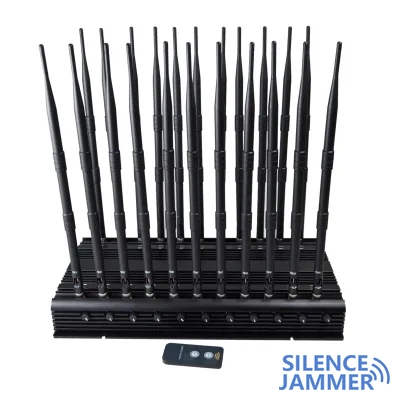With the rapid advancement of communication technology, cell phone jammer s, which have long been relied on in prison systems, are facing new challenges. In recent years, Uruguayan Interior Minister Eduardo Bonomi has publicly acknowledged that the signal jammers installed in prisons have gradually lost their original effectiveness due to the improvement and enhancement of cell phone signals. This change has raised public concerns about prison security, especially when high-risk prisoners are still able to issue criminal instructions through their mobile phones. GPS jammer This article will explore Bonomi's statement in detail and analyze the effectiveness of cell phone jammers in modern communication environments and their future development direction.Wifi jammer
1. The original intention and current situation of jammers
As early as 2015, Uruguayan prisons began to install cell phone signal jammers, first in Libertad Prison and then in Comcar Prison. The original intention of installing these devices was to prevent prisoners from using mobile phones for illegal communications, especially when it comes to criminal command, drug trafficking and organizing violence. The presence of mobile phones is considered a great threat. By blocking mobile phone signals, jammers ensure that prisoners cannot communicate with the outside world through their mobile phones, thereby reducing the possibility of collaborative crimes inside and outside the prison.

However, with the advancement of mobile phone technology, especially as communication companies enhance signal coverage and improve service quality, these early jammers can no longer compete with modern communication technology. In an interview with Sarandi Radio, Bonomi said that after purchasing the mobile phone jammer, the operator quickly strengthened the signal, causing the jammer to gradually lose its original effectiveness. Prisoners can even identify which operators' signals can bypass the jammer and continue to use their mobile phones for illegal communication activities.
2. Technical challenges in prisons
Bonomi's public statement is a sign that Uruguayan prisons face technical challenges in dealing with the use of prisoners' mobile phones. This problem is not limited to Uruguay, and prisons in many countries face similar difficulties. The rapid development of mobile phone technology, including signal enhancement, frequency band expansion and the widespread use of encryption technology, makes it difficult for traditional jammers to adapt to these new communication methods.
3. Real-life case: Langhain case
Bonomi's remarks are not groundless. A typical example is the "Langhain case", which has attracted widespread public attention to the problem of mobile phones in prisons. According to reports, prisoner "Coco" Parentini issued a murder order through his mobile phone in Libertad Prison, resulting in the shooting of a Nacional fan Lucas Langhain on the street. Although there was a mobile phone jammer in the prison, Parentini still managed to use his mobile phone to contact the outside world and command two accomplices to carry out the deadly attack.
The exposure of this case has raised questions about the prison management system, especially the effectiveness of jammers. People can't help but ask: If the jamming devices in prisons cannot prevent prisoners from using mobile phones to commit such serious crimes, then what is the point of these devices?
4. The future of mobile phone jammers
Given the shortcomings of existing jammers, prison management departments in Uruguay and other countries are looking for new technical solutions to better deal with the illegal use of mobile phones. Bonomi pointed out that the Ministry of the Interior is currently working to combine other technical means to make up for the shortcomings of jammers. Future jammer systems need to be more targeted, adaptable to signal changes from different operators, and more precise in their jamming range to avoid interfering with communications outside the prison.

At the same time, some emerging technologies have emerged internationally, such as smart jammers and signal management systems, which can more effectively detect and block communications within a specific frequency range and can be flexibly adjusted as needed. Such technologies can not only improve prison security, but also accurately interfere with prisoners' communications without affecting surrounding residents.
5. Conclusion
The problem of mobile phone jammers in Uruguayan prisons reveals the technical challenges faced in modern prison management. Although jammers were once an effective tool to combat illegal communications by prisoners, they have become outdated with the advancement of mobile phone signal technology. In the future, prison management departments need to introduce more advanced and flexible technical means to cope with the ever-changing communication environment. Only in this way can we effectively prevent tragedies like the "Langhain case" from happening again.
Kommentare zu "Are cell phone jammers in prisons obsolete? -- Taking Uruguay as an example"
Es sind noch keine Kommentare vorhanden
Kommentar schreiben
Möchten Sie dem Autor einen Kommentar hinterlassen? Dann Loggen Sie sich ein oder Registrieren Sie sich in unserem Netzwerk.
 16.09.2024
16.09.2024
 6
6
 11
11
 166
166


 Besonders empfehlenswerte Werke:
Besonders empfehlenswerte Werke: